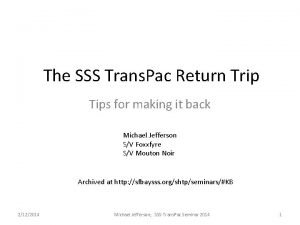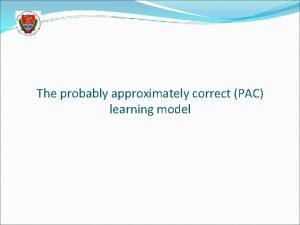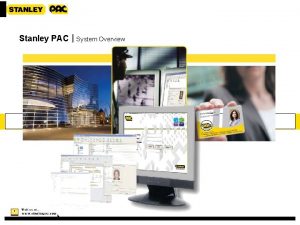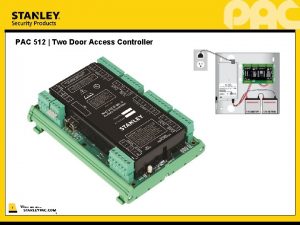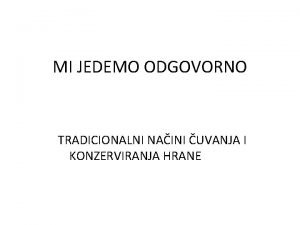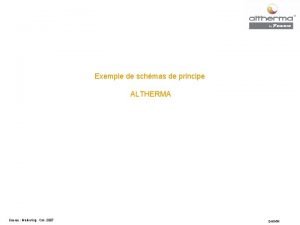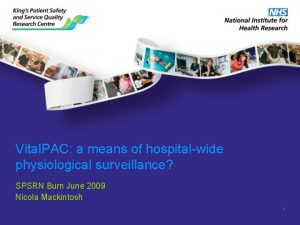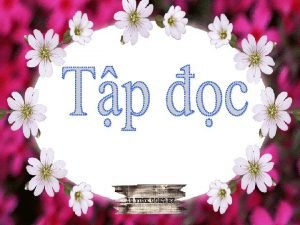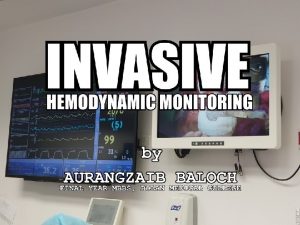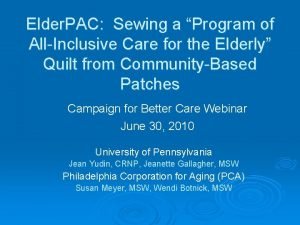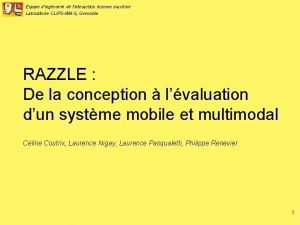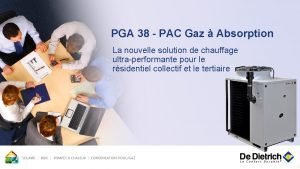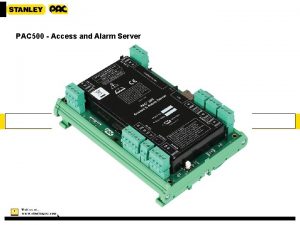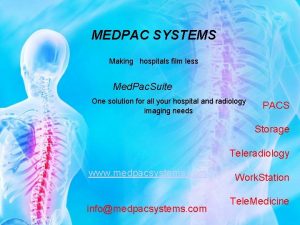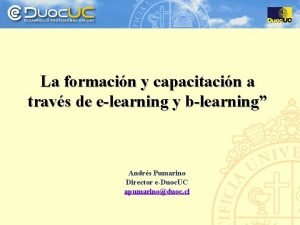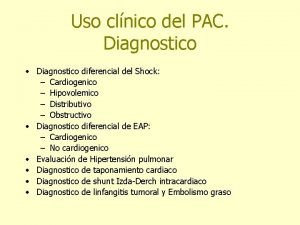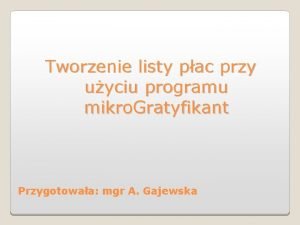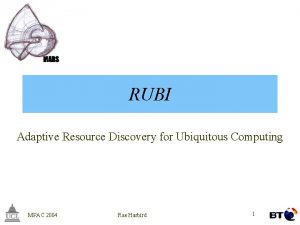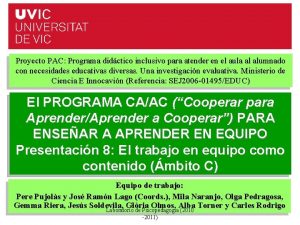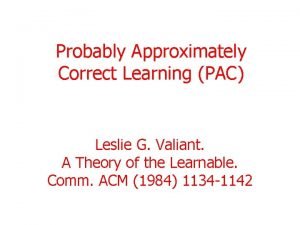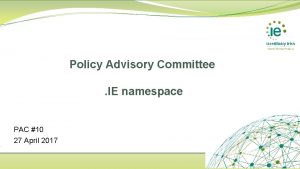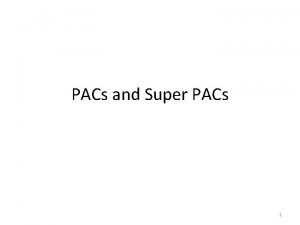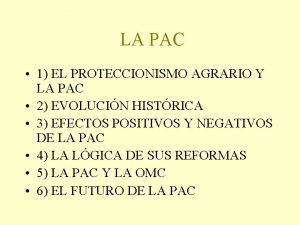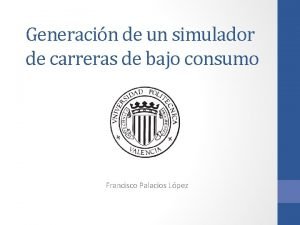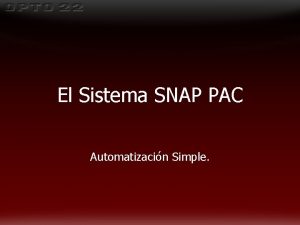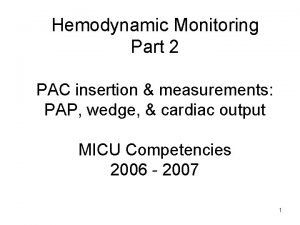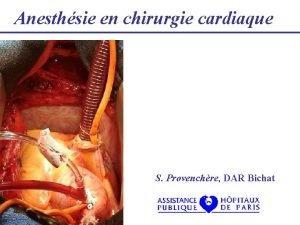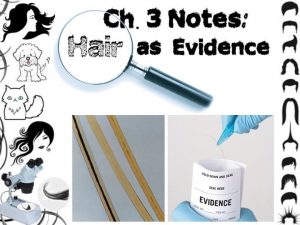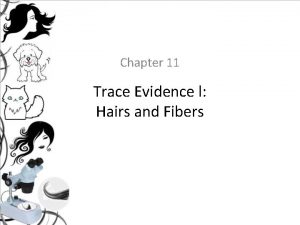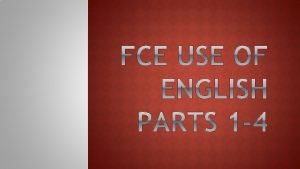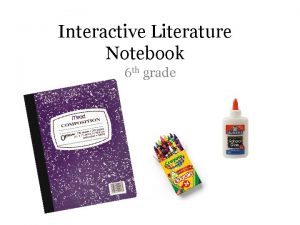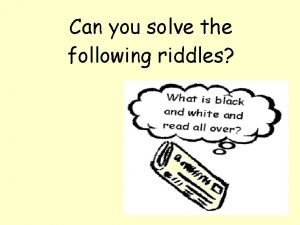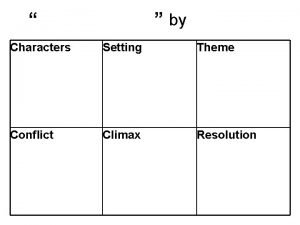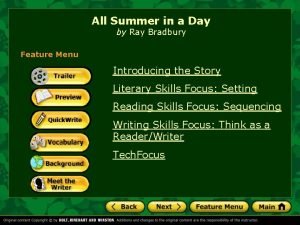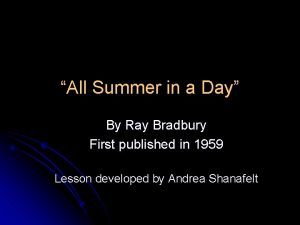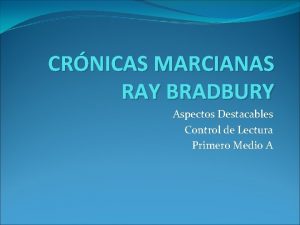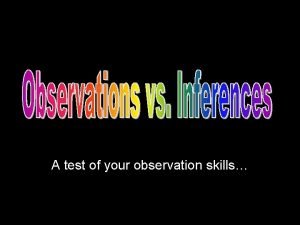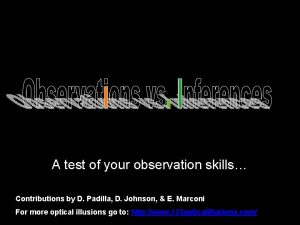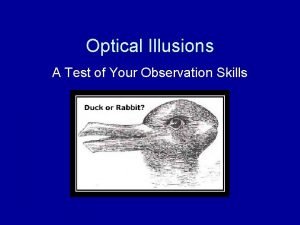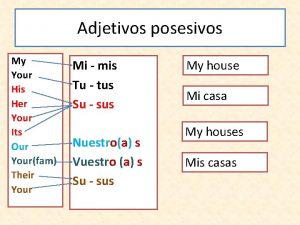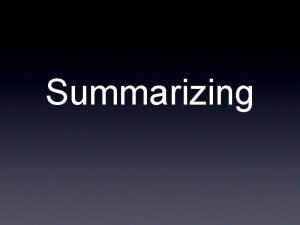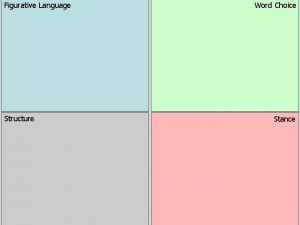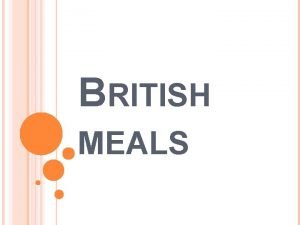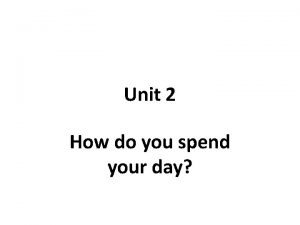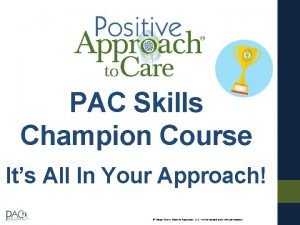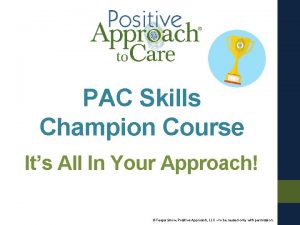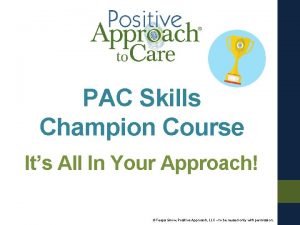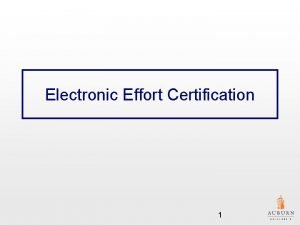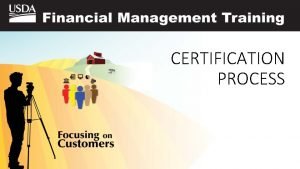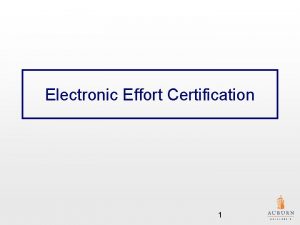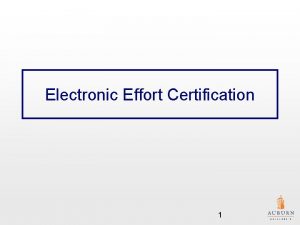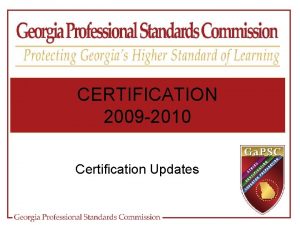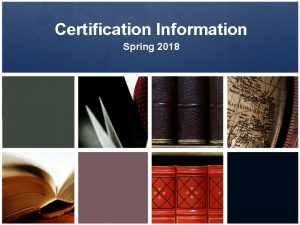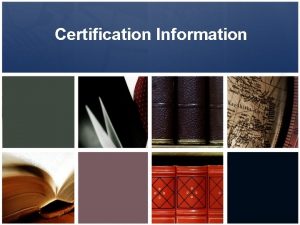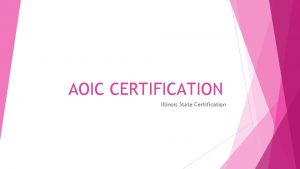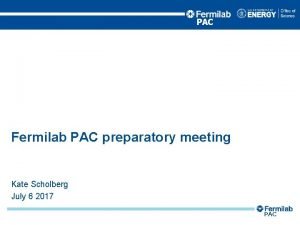PAC Certification Skills Day Its All In Your















































































































- Slides: 111

PAC Certification Skills Day It’s All In Your Approach! © Teepa Snow, Positive Approach, LLC – to be reused only with permission.

PAC Mission: Use our talents and abilities to develop awareness, spread knowledge, and teach skills to transform what exists into a more positive dementia care culture. PAC Vision Statement: Positive Approach® enhances the life and relationships of those living with brain change by fostering an inclusive, universal community. Tab 1 Page 2 © Teepa Snow, Positive Approach, LLC – to be reused only with permission.

Introduction: Beliefs • The relationship is most critical, not the outcome of one encounter • We are a key to make life worth living • People living with dementia are doing the best they can • We must be willing to change ourselves © Teepa Snow, Positive Approach, LLC – to be reused only with permission.

Can we be Sapphire in all interactions? © Teepa Snow, Positive Approach, LLC – to be reused only with permission.

PAC Skills Levels: Unaware Novice/Aware Proficient Accomplished Master © Teepa Snow, Positive Approach, LLC – to be reused only with permission.

INTENT I'm sorry I was trying to help THIS IS HARD I'm sorry, this is hard, I hate it for you THAT HAPPENED I'm sorry, it should not have happened EMOTION I'm sorry I made you angry INTELLECTUAL CAPACITY I'm sorry, I had no right to make you feel that way © Teepa Snow, Positive Approach, LLC – to be reused only with permission.

PAC Positive Language: Person Living with Dementia (PLWD) Care Partner Assisting With Doing With, Not To Substitution, Not Subtraction Unmet Needs GEMS® State Expressive Communication Validation Tab 1 Page 4 © Teepa Snow, Positive Approach, LLC – to be reused only with permission.

Tab 1 Page 6 © Teepa Snow, Positive Approach, LLC – to be reused only with permission.

Hippocampus: Big Change Learning and Memory Center: • • • Tab 2 Page 26 Way-finding Learning and Memory Time Awareness © Teepa Snow, Positive Approach, LLC – to be reused only with permission.

The person’s brain is dying © Teepa Snow, Positive Approach, LLC – to be reused only with permission.

Normal Brain with Alzheimers Used with permission from Alzheimers: The Broken Brain, 1999 University of Alabama Tab 1 Page 8 © Teepa Snow, Positive Approach, LLC – to be reused only with permission.

Amygdalae: Dangerous Need Risky Dislike Tab 1 Page 10 Alert/Aware © Teepa Snow, Positive Approach, LLC – to be reused only with permission.

Primitive Brain is in Charge of: Survival: • Autonomic protective – fright, flight, fight + hide or seek • Pleasure seeking – meeting survival needs and finding joy Thriving – Running the Engine: • Maintain vital systems: BP, BS, O 2 sat, Temp, pain • Breathe, suck, swallow, digest, void, defecate • Circadian rhythm • Infection control Learning New and Remembering: • Information • Places: spatial orientation • Passage of Time: temporal orientation Tab 1 Page 10 © Teepa Snow, Positive Approach, LLC – to be reused only with permission.

Positron Emission Tomography (PET) Alzheimers Disease Progression vs. Normal Brains Tab 1 Page 9 G. Small, UCLA School of Medicine. © Teepa Snow, Positive Approach, LLC – to be reused only with permission.

Positron Emission Tomography (PET) Alzheimers Disease Progression vs. Normal Brains Primitive Brain Tab 1 Page 9 Primitive Brain G. Small, UCLA School of Medicine. © Teepa Snow, Positive Approach, LLC – to be reused only with permission.

Executive Control Center Left Right • • • Left Tab 1 Page 11 Right Impulse Control Be Logical Make Choices Start-Sequence. Complete-Move On Self Awareness See Another’s Point of View © Teepa Snow, Positive Approach, LLC – to be reused only with permission.

It’s time for an Adult Experiential Learning Cycle (AELC) with the GEMS®: -Experience -Share -Process -Connect -Apply © Teepa Snow, Positive Approach, LLC – to be reused only with permission.

Diamonds: What do you notice about the PLw. D? What did the Care Partner do? Tab 1 Page 14 © Teepa Snow, Positive Approach, LLC – to be reused only with permission.

Diamond Role Play: - Diamond: “Are you the boss around here? ” - Support: “You’re looking for the boss around here? ” - Diamond: “Yes, the boss. ” - Support: “Hi, I’m (Support’s Name), the boss. ” - Diamond: “Well, I need to go home right now. ” - Support: “(Diamond’s Name), you need to go home right now to do something or just to be there? ” Tab 1 Page 14 © Teepa Snow, Positive Approach, LLC – to be reused only with permission.

Rubies: What do notice about the PLw. D? What did the Care Partner do? Tab 1 Page 15 © Teepa Snow, Positive Approach, LLC – to be reused only with permission.

Ruby Role Play: - Ruby: Rubbing right leg (monocular visual regard) - Support: Bring chair in to right side at supportive stance, move back out and re-approach using PPA™ “Hi (Lead’s Name), it’s (Support’s Name). ” - Ruby: Keep eyes focused on your own hand, do not respond to your name or the person until they get their hand into your visual range. - Support: Sit down and slowly move your hand, palm-up into visual range at the same height as their hand – wait and possibly wiggle fingers if they don’t move towards you. Once they start to move towards you, shift into Hu. H® and pump hand. Be sure to be smiling. - Ruby: Slowly make your way up their arm to their face with your eyes. Smile when you see their smile. Tab 1 Page 15 © Teepa Snow, Positive Approach, LLC – to be reused only with permission.

What do you notice? 1. Pace 2. Visual Cues 3. Verbal Cues 4. Physical Cues What do you want to try? Tab 1 Page 16 © Teepa Snow, Positive Approach, LLC – to be reused only with permission.

Show Tell Touch See Understand Feel Tab 1 Page 16 © Teepa Snow, Positive Approach, LLC – to be reused only with permission.

GEMS® Based on Allen Cognitive Levels • A Cognitive Disability Theory – OT based • Creates a common language and approach to providing: -Environmental support -Caregiver support and cueing strategies -Expectations for retained ability and lost skill • Each state requires a special ‘setting’ and ‘just right’ care to shine • Each state has specific visual, verbal, touch communication cues • Promotes graded task modification • Accounts for chemistry as well as structural brain changes • Encourages ‘in the moment’ assessment of ability and need Tab 1 Page 13 © Teepa Snow, Positive Approach, LLC – to be reused only with permission.

GEMS®: A Positive Framework Sapphires: True Blue - Healthy Brain - Slower but Fine Diamonds: Clear/Sharp – Routines and Routines Rule – Change is Hard – Cutting Emeralds: On the Go with Purpose – Naturally Flawed – Time Travel Ambers: Caught In a Moment of Time – Caution Required – All About Sensations Rubies: Deep and Strong – Others Stop Seeing What is Possible – Stop and Go – Big Motions or Still Pearls: Hidden in a Shell – Immobile - Beautiful Moments to Behold Tab 1 Page 13 © Teepa Snow, Positive Approach, LLC – to be reused only with permission.

General Vision Changes: Sapphires: loss of about 45 degrees of field Diamonds: tunnel vision Emeralds: binocular vision Ambers: see parts, not whole; loss of object recognition Rubies: monocular Pearls: movement, familiar/unfamiliar Tab 1 Page 25 © Teepa Snow, Positive Approach, LLC – to be reused only with permission.

Receptive Language Changes: Sapphires: high-pitched harder, crowded and loud spacing more challenging Diamonds: slower, missing consonants Emeralds: missing about ¼ words, needs pauses, does better with rhythm Ambers: 2/4 words, misses much, catches some key words out of context Rubies: social chit-chat, music, rhythm, tone of voice Pearls: familiar and friendly, calm or excited © Teepa Snow, Positive Approach, LLC – to be reused only with permission.

Expressive Language Changes: Sapphires: word finding a little slower, may be pauses Diamonds: varies with affect, word-finding problems, mis-speaking in times of stress Emeralds: gets stuck in social, repeats phrases or words, intonation matters Ambers: repetitive, variable volume, echo Rubies: less articulated speech, babble, hum, or sing, rhythmic vocalizations Pearls: sounds to single words, responsive © Teepa Snow, Positive Approach, LLC – to be reused only with permission.

Dexterity – Hand Skills Sapphires: still intact, slightly slower Diamonds: slower, limited with bilateral skilled integration Emeralds: individual actions are there, sequencing is challenging, more forceful Ambers: heightened use of hands, skilled tool use decreased, strong Rubies: whole hand with limited finger use, can hold and carry but difficulty with release Pearls: grasp strong, limited opening © Teepa Snow, Positive Approach, LLC – to be reused only with permission.

Body Skills: Sapphires: sustained, slower Diamonds: details not as good, globally fine Emeralds: better with dominant side, errors Ambers: strong more than skilled, limited safety awareness Rubies: whole body not segmented, front OK, back not Pearls: reflexive, great trouble with gravity or speed or movement © Teepa Snow, Positive Approach, LLC – to be reused only with permission.

People Awareness Skills: Sapphires: sustained, slower to ID Diamonds: recent questionable, older/deeper better Emeralds: recognize like/don’t like Ambers: can get lost in old-new relationships, will like or not like in the moment Rubies: like or not like, familiar versus not Pearls: voices, faces, touches, smells, familiar or not 31 © Teepa Snow, Positive Approach, LLC – to be reused only with permission.

Place Awareness Skills: Sapphires: sustained, may get ‘turned around’ Diamonds: familiar feels best, gets lost in the community and in unfamiliar places Emeralds: is OK if what is seen is OK, but may seek the old familiar in task or social Ambers: OK if ‘here’ feels OK, otherwise will seek ‘there’ Rubies: may or may not have a destination, more a movement or stillness pattern Pearls: knows if what is experienced is comforting © Teepa Snow, Positive Approach, LLC – to be reused only with permission.

Time Awareness Skills: Sapphires: lifelong, crunched or expanded Diamonds: more the past than now Emeralds: lost in episodes or caught in loops Ambers: in the moment, not the task or sequence Rubies: in the experience, not the time Pearls: time has much less meaning © Teepa Snow, Positive Approach, LLC – to be reused only with permission.

Situation Awareness Skills: Sapphires: sustained, may be tough to think at times Diamonds: old moments drive new interactions Emeralds: has moments of time travel Ambers: more sensory awareness than intellectual awareness, immediate not big picture Rubies: only in moments, less body aware Pearls: more inside than externally aware © Teepa Snow, Positive Approach, LLC – to be reused only with permission.

Visual Cue Options: - Signs Pictures Props or Objects Gestures Facial Expressions Demonstrations © Teepa Snow, Positive Approach, LLC – to be reused only with permission.

How Can We Give Information? Visual Cues - Show Verbal Cues - Tell Tactile Cues - Touch Tab 1 Page 17 © Teepa Snow, Positive Approach, LLC – to be reused only with permission.

Practice: Visual Cues © Teepa Snow, Positive Approach, LLC – to be reused only with permission.

3 Zones of Human Awareness: Public Space: more than 6 feet away • Visual awareness and social interactions Personal Space: 6 feet to arm’s length away • Friendly and personal conversations Intimate Space: within arm’s reach • Intimate touch or connections Tab 1 Page 17 © Teepa Snow, Positive Approach, LLC – to be reused only with permission.

Practice: § PPA using the 3 zones as a guide: - Get into visual range (public space), pausing at the edge of personal space at approximately 2 arms length away - Greet with your hand held still by your face and smile - Slowly extend hand for a handshake - After the person you are approaching gives permission by extending their hand, move slowly into a handshake (entering intimate space) - Move from handshake to Hand-under-Hand® position - Move from the front to the side, getting into a supportive stance - Get to or below their eye level - Use a PPC (Positive Personal Connection) or PAS (Positive Action Starter) phrase Tab 1 Page 18 © Teepa Snow, Positive Approach, LLC – to be reused only with permission.

Use the Positive Physical Approach™ With Someone in an Emerald State A Dynamic Assessment Tool for a Shared Relationship © Teepa Snow, Positive Approach, LLC – to be reused only with permission.

Learning to use PPA™ + Hu. H® + PPC + PAS = Learning to Cook Learning to Sing © Teepa Snow, Positive Approach, LLC – to be reused only with permission.

Are the Steps of PPA™ Ingredients or a Recipe? © Teepa Snow, Positive Approach, LLC – to be reused only with permission.

Learning How to Cook = PPA Taking Chef’s training being a home cook - First, a simple recipe, using some ingredients: - You are approaching a person in an Emerald state in a common space - What are the ingredients? - Do items and amounts matter? - What is a recipe? - Does sequence matter? - Do different combinations make a difference? - Why does it matter? - How will you practice? Vary ingredients or recipes? © Teepa Snow, Positive Approach, LLC – to be reused only with permission.

Learning to Sing = PPA™ We all sing, however, taking singing lessons: - What are the skills you would be learning? - Breath control - Scales - Projection - Songs - Rhythm - Warm-ups - What outcome would you be seeking? - Being part of a group - Stress reduction - Self-satisfaction - Career - How is developing your PPA™, PPC, PAS, and Hu. H® like learning to sing with a trainer? © Teepa Snow, Positive Approach, LLC – to be reused only with permission.

Core Ingredients and a Basic Recipe: - Observe visually - Seek visual regard - Offer verbal greeting - If visual and verbal reactions are OK, progress (if not, pause) - Offer friendly social contact: hand shake, eye contact - If offer is accepted, transition into supportive position, at a matched height (if not, pause) - Transition into Hand-under-Hand® positioning, if accepted, to sustain connection (if not, pause and release and step-move back) - Offer a PPC, if accepted, transition to a PAS (if not, Tab 1 pause and try again) Page 19 © Teepa Snow, Positive Approach, LLC – to be reused only with permission.

Person Being Approached: • Practice using the abilities of someone in an Emerald state: - Binocular vision: start off looking downward - Vague in language: missing ¼ words - Better with step by step cues - Take some time to process: count to 3 in your head • Try to provide your partner with honest and authentic feedback considering you were in Emerald state © Teepa Snow, Positive Approach, LLC – to be reused only with permission.

Positive Physical Approach™* (PPA™)* • Stop moving at 6 feet out • Greet: hold your open hand still next to your face, say their name • Offer hand in a handshake position • With their acceptance, slowly come in from the front within visual range • Move into supportive stance, turn shoulders • From the handshake, move into Hand-under-Hand® • Get low: sit, kneel, or stand at or below their level • Make a connection: PPC, then wait for their response • Deliver a message: use V-V-T Cues and a PAS * = if in public space and you start the interaction Tab 1 Page 18 © Teepa Snow, Positive Approach, LLC – to be reused only with permission.

Positive Physical Approach™ To the tune of Amazing Grace Come to the front, go slow Get to the side, get low Offer your hand, call out their name Then wait…. . If you will try, then you will see How different life can be For those you’re caring for. © Teepa Snow, Positive Approach, LLC – to be reused only with permission.

Top Five Human Needs and Emotional Indicators of Distress Five Expressions of Emotional Distress Five Human Needs Angry Intake irritated – angry – furious Hydration, nourishment, meds Sad Energy Flow dissatisfied – sad – hopeless tired or revved up directed inward or outward Lonely Output solitary – lonely – abandoned/trapped Urine, feces, sweat, saliva, tears Scared Comfort anxious – scared – terrified 4 Fs and 4 Ss Lacking Purpose Pain-Free!!! disengaged – bored – useless Tab 1 Page 24 Physical, emotional, spiritual © Teepa Snow, Positive Approach, LLC – to be reused only with permission.

Breakout Session: Unmet Needs Before Approach: Mentor leads Ø What do you notice? • Body position and language • VVT cues Ø What would you like to try? Ø How will you do this? After Approach: Mentor leads Ø Were you able to figure out the unmet need? Ø What 2 pieces worked well in your PPA™? Ø What is one thing you would change? • Try it again © Teepa Snow, Positive Approach, LLC – to be reused only with permission.

Tab 1 Page 25 Vision Center – BIG CHANGES © Teepa Snow, Positive Approach, LLC – to be reused only with permission.

Vision Changes: With each new level of vision change, there is a decrease in safety awareness. 1. Less Peripheral Awareness 2. Tunnel Vision 3. Binocular Vision 4. Object/Use Confusion 5. Monocular Vision 6. Limited Visual Regard Tab 1 Page 25 © Teepa Snow, Positive Approach, LLC – to be reused only with permission.

Tab 1 Page 26 Understanding Language – Big Change © Teepa Snow, Positive Approach, LLC – to be reused only with permission.

Tab 1 Page 26 Hearing Sound – Not Changed © Teepa Snow, Positive Approach, LLC – to be reused only with permission.

Practice: Verbal Cues Keep it simple Directed Matched to visual cues © Teepa Snow, Positive Approach, LLC – to be reused only with permission.

Positive Personal Connections (PPC) 1. Greet or Meet: introduce yourself and use their preferred name: “Hi___I am ___” or “I am___ and you are? ” 2. Say Something Nice: indicate something about them of value 3. Be Friendly: share about you, then leave a blank 4. Notice Something: point out something in the environment 5. Be Curious: explore a possible unmet like, want, or need Tab 1 Page 21 © Teepa Snow, Positive Approach, LLC – to be reused only with permission.

Sensory Strip Motor Strip White Matter Connections Big Changes! Right Left Automatic Speech Rhythm – Music Expletives Preserved! Formal Speech and Language Center Huge Changes! Tab 1 Page 28 Left © Teepa Snow, Positive Approach, LLC – to be reused only with permission.

Visual Verbal Touch Cues: How You Help and Connect Sight or Visual Cues Verbal or Auditory cues Touch or Tactile Cues Tab 1 Page 17 © Teepa Snow, Positive Approach, LLC – to be reused only with permission.

Touching Cues • • • Tab 1 Page 28 Place an item or tool in hand Touch with a finger or hand Hand guidance Hand on shoulder or back Hand-under-Hand® contact Hug © Teepa Snow, Positive Approach, LLC – to be reused only with permission.

Breakout Session: Practice Giving Cues Give cues based on what you notice about the PLWD: Eat/drink Movement/walking Undressing/changing Clean-up shirt/hair Come to…(dinner, trip, garden, etc…) Time for…(dinner, trip, visit, etc. . ) Do an activity © Teepa Snow, Positive Approach, LLC – to be reused only with permission.

Hand-under-Hand®: © Teepa Snow, Positive Approach, LLC – to be reused only with permission.

Try Hand-under-Hand®: Tab 1 Page 29 1. To comfort 2. To visually direct - look at 3. To get started - initiate 4. To help with detail - assist 5. To move or change direction © Teepa Snow, Positive Approach, LLC – to be reused only with permission.

Try Hand-under-Hand®: 1. To get the person to stand 2. To get the person to walk 3. To get the person to eat/drink 4. To get the person to take meds 5. To get the person to sit down © Teepa Snow, Positive Approach, LLC – to be reused only with permission.

Use the Positive Physical Approach™ © Teepa Snow, Positive Approach, LLC – to be reused only with permission.

Positive Physical Approach™ 1. Stop moving at 6 feet out 2. Greet: hold your open hand still next to your face, say their name 3. Offer hand in a handshake position 4. With their acceptance, slowly come in from the front within visual range 5. Move into supportive stance, turn shoulders 6. From the handshake, move into Hand-under-Hand® 7. Get low: sit, kneel, or stand at or below their level 8. Make a connection: PPC, then wait for their response 9. Deliver a message: use V-V-T Cues and a PAS * = if in public space and you start the interaction Tab 1 Page 18 © Teepa Snow, Positive Approach, LLC – to be reused only with permission.

Step 1: Stop moving at 6 feet out Pause at the edge of public space • Stop moving at 6 feet out • Let the person notice you in public space, and give them time to do this • Acknowledge the person’s ownership of personal space • Respect their space! Tab 1 Page 20 © Teepa Snow, Positive Approach, LLC – to be reused only with permission.

Step 2: Greet and Give ‘Hi’ Sign Bring flat, open palm up near face: • Visual cue to look at you Say “Hi!” and use their preferred name, if known: • Verbal cue to look at you Look friendly by smiling and making eye contact Tab 1 Page 20 © Teepa Snow, Positive Approach, LLC – to be reused only with permission.

Step 3: Say Name, Offer Hand Seek permission to enter personal space Show person what you want to do Watch for their reaction/response If there’s hesitation: -Stay in public space -Turn your body sideways into supportive stance -See what happens next – if no better, then hold back Tab 1 Page 20 © Teepa Snow, Positive Approach, LLC – to be reused only with permission.

Step 4: Move Slowly Move slowly toward the person while offering your extended hand: • • Tab 1 Page 20 Smile and look friendly 1 second = 1 step Respect their slowed processing time Respect their decreased ability to do two things at one time © Teepa Snow, Positive Approach, LLC – to be reused only with permission.

Step 5: Move Into Supportive Stance Shift toward their dominant side – hand shake side Turn your trunk sideways to the person Stay at arm’s length away Keep your face and chest back Tab 1 Page 20 © Teepa Snow, Positive Approach, LLC – to be reused only with permission.

Hand-under-Hand®: © Teepa Snow, Positive Approach, LLC – to be reused only with permission.

Hand-under-Hand® Assistance: Helps assist doing with, not for Protects them and us! Helps direct gaze – eye-hand coordination Pressure in the palm is calming © Teepa Snow, Positive Approach, LLC – to be reused only with permission.

Hand-under-Hand®: Protects aging, thin, fragile, forearm skin © Teepa Snow, Positive Approach, LLC – to be reused only with permission.

High Risk: © Teepa Snow, Positive Approach, LLC – to be reused only with permission.

Step 6: Hand-under-Hand® Go into Hand-under. Hand from a normal handshake • Provides protection for them and you • Connects you with them while giving them a sense of control Tab 1 Page 20 © Teepa Snow, Positive Approach, LLC – to be reused only with permission.

Step 7: Move to Side, Get Low Get to their level • Sit, kneel, or squat Respect intimate space Allow eye contact with limited visual field • Gets focus on your face, not your chest or middle Tab 1 Page 20 © Teepa Snow, Positive Approach, LLC – to be reused only with permission.

If You Can’t Get Low: Stay greater than arm’s length away Use Verbal Connections If it’s not working, get a seat Tab 1 Page 20 © Teepa Snow, Positive Approach, LLC – to be reused only with permission.

Step 8: Make Connection Make a friendly statement Wait for a response or acknowledgement Be sure you have a connection before you start your care Tab 1 Page 20 © Teepa Snow, Positive Approach, LLC – to be reused only with permission.

Step 9: Deliver a Message Give visual cues first Offer verbal information next Use touching last and only if the person is aware of your plan Tab 1 Page 20 © Teepa Snow, Positive Approach, LLC – to be reused only with permission.

Positive Action Starters (PAS): 1. Help: Be sure to compliment their skill in this area, then ask for help. 2. Try: Hold up or point to the item you would like to use, possibly sharing in the dislike of the item or task, “Well, let’s try this. ” 3. Choice: Try using visual cues to offer two possibilities or one choice with something else as the other option. 4. Short and Simple: Give only the first piece of information, “It’s about time to (first task). ” 5. Step by Step: Only give a small part of the task at first, “Lean forward. ” Tab 1 Page 21 © Teepa Snow, Positive Approach, LLC – to be reused only with permission.

Practice PPA™ PLWD: Gives emotional response to the approach Care Partner: Identifies 2 things that went well and 1 thing to change Videographer: Asks, “What would you want to do differently? How would you do that? ” Practice with the change at least 2 x (drill for skill) If present, Mentor leads group AELC © Teepa Snow, Positive Approach, LLC – to be reused only with permission.

Breakout Session: Think it Through Before the approach, mentors ask: -What do you notice about the person? -What are they doing? -Where is their visual field and focus? -What is the state of their amygdalae? (annoyingrisky-dangerous) -What else do you notice? -Environment -Location -People around -Time of day Based on this information, what will you try in order to make a connection? © Teepa Snow, Positive Approach, LLC – to be reused only with permission.

Breakout Session (if not on the floor) PPA™ Special Situations: Think it Through… What Can You Do? Tab 1 Page 22 1. The person is standing up 2. You enter their room 3. The person approaches you/ starts the interaction 4. The person is blind 5. The person is at a table 6. The person is in a corner or facing a door 7. The person is asleep 8. The person doesn’t offer their hand back 9. The person tells you to stay out © Teepa Snow, Positive Approach, LLC – to be reused only with permission.

Practicing PPA + Hu. H + PPC + PAS = WHOA!! 1. Mentor asks PLw. D: -How did that feel? 2. Approacher restates what they heard, thanks the PLw. D, and steps back to get coached 3. Videographer says to Approacher: -How do you think you did? -Let’s take a look at the video -What are 2 things you did well? -What is 1 thing you would do differently? -How would you do that? -Let’s try 4. Mentor leads: Retry if appropriate with the same PLw. D © Teepa Snow, Positive Approach, LLC – to be reused only with permission.

Top Five Human Needs and Emotional Indicators of Distress Five Expressions of Emotional Distress Five Human Needs Angry Intake irritated – angry – furious Hydration, nourishment, meds Sad Energy Flow dissatisfied – sad – hopeless tired or revved up directed inward or outward Lonely Output solitary – lonely – abandoned/trapped Urine, feces, sweat, saliva, tears Scared Comfort anxious – scared – terrified 4 Fs and 4 Ss Lacking Purpose Pain-Free!!! disengaged – bored – useless Tab 1 Page 24 Physical, emotional, spiritual © Teepa Snow, Positive Approach, LLC – to be reused only with permission.

I Will Change! To the tune of “This Little Light of Mine” By Teepa Snow © Teepa Snow, Positive Approach, LLC – to be reused only with permission.

I am gonna meet and greet Before I start to treat I am gonna meet and greet Before I check your feet I am gonna meet and greet Before I help you eat How I start sets us up to succeed! © Teepa Snow, Positive Approach, LLC – to be reused only with permission.

No more just ‘gettin’ it done’ I’m gonna do with you No more just ‘gettin’ it done’ I’m gonna help you thru No more just ‘gettin’ it done’ We’re gonna work, we two Cause if I do it all, we both lose! © Teepa Snow, Positive Approach, LLC – to be reused only with permission.

I’m gonna laugh and dance with you Not just watch and frown I’m gonna laugh and dance with you Not just stand around I’m gonna laugh and dance with you We’ll really go to town For the power of joy I have found! © Teepa Snow, Positive Approach, LLC – to be reused only with permission.

Sapphires True Blue Optimal Cognition, Healthy Brain Tab 1 Page 30 © Teepa Snow, Positive Approach, LLC – to be reused only with permission.

Sapphires: Optimal Cognition: flexible in capacity Normal aging will slow, yet not change ability More time to process with stress True to self: likes/dislikes are the same Able to learn: takes more practice Stress, fatigue or pain can induce Diamond moments Time to recharge or heal can restore to Sapphire Tab 1 Page 30 © Teepa Snow, Positive Approach, LLC – to be reused only with permission.

Diamonds Clear and Sharp Routines and Rituals Rule Tab 1 Page 30 © Teepa Snow, Positive Approach, LLC – to be reused only with permission.

Diamonds: Routines and Rituals Rule: likes familiar May resist change or won’t let things go Rigid under pressure: limited perspective Becoming protective: may be territorial or isolate Repeats self: hard to integrate new information Can cover mistakes in social interaction Symptoms may or may not be dementia related Tab 1 Page 30 © Teepa Snow, Positive Approach, LLC – to be reused only with permission.

Emeralds On the Go with a Purpose Naturally Flawed Tab 1 Page 30 © Teepa Snow, Positive Approach, LLC – to be reused only with permission.

Emeralds: Desires independence: noticeable ability change Vocabulary and comprehension diminishing Communication becoming vague May neglect personal care routines On the go: needs guidance and structure Difficulty finding way to and from places May be lost in time Tab 1 Page 30 © Teepa Snow, Positive Approach, LLC – to be reused only with permission.

Ambers Caught in a Moment of Time Caution Required Tab 1 Page 30 © Teepa Snow, Positive Approach, LLC – to be reused only with permission.

Ambers: Caution Required Focused on sensation Will react to how things: look, sound, feel, smell or taste Lives in the moment: not socially aware No safety awareness: typically very busy Difficulty understanding and expressing needs No ability to delay needs or wants Needs help with tasks: may resist Hard to connect with: may exhaust care partners Tab 1 Page 30 © Teepa Snow, Positive Approach, LLC – to be reused only with permission.

Rubies Deep and Strong Others Stop Seeing What Is Possible Tab 1 Page 30 © Teepa Snow, Positive Approach, LLC – to be reused only with permission.

Rubies: Others stop seeing what is possible Retains rhythm: can sing, hum, pray, sway and dance Understands expressions and tone of voice Losing ability to understand language Limited skill in mouth, eyes, fingers, and feet Can mimic big movements: gross motor abilities Loss of depth perception; monocular vision Falls prevalent: can only move forward Care Partners will have to anticipate unmet needs Tab 1 Page 30 © Teepa Snow, Positive Approach, LLC – to be reused only with permission.

Pearls Hidden Within a Shell Beautiful Moments to Behold Tab 1 Page 30 © Teepa Snow, Positive Approach, LLC – to be reused only with permission.

Pearls: Person is still there Moments of connection take time and will be short Knows familiar: unmet needs may cause distress Unable to move by themselves: fetal position, still and quiet Primitive reflexes have taken over: difficulty swallowing Brain failure shuts down body: diminishes need too eat or drink Care Partners need to give permission to let go Tab 1 Page 30 © Teepa Snow, Positive Approach, LLC – to be reused only with permission.

Progression of the Condition To the tune of This Old Man Note: Each verse is sung progressively slower © Teepa Snow, Positive Approach, LLC – to be reused only with permission.

Sapphire true, you and me The choice is ours, and we are free To change our habits, to read, and think and do We’re flexible, we think it through! © Teepa Snow, Positive Approach, LLC – to be reused only with permission.

Diamond bright, share with me Right before, where I can be I need routine and different things to do Don’t forget, I get to choose! © Teepa Snow, Positive Approach, LLC – to be reused only with permission.

Emerald – Go, I like to do I make mistakes, but I am through! Show me only one step at a time Break it down and I’ll be fine! © Teepa Snow, Positive Approach, LLC – to be reused only with permission.

Amber – Hey!, I touch and feel I work my fingers, rarely still I can do things, if I copy you What I need is what I do! © Teepa Snow, Positive Approach, LLC – to be reused only with permission.

Ruby – skill – it just won’t go Changing something must go slow Use your body to show me what you need Guide, don’t force me, don’t use speed! © Teepa Snow, Positive Approach, LLC – to be reused only with permission.

Now a Pearl, I’m near the end But I still feel things through my skin Keep your handling always firm and slow Use your voice to calm my soul. © Teepa Snow, Positive Approach, LLC – to be reused only with permission.

Identify Some of the Challenging Situations You Experienced in Your Practice: Putting it All Together (Mentors Demo): 1. 2. 3. 4. 5. 6. Identify GEMS® Adapt PPA™ Make a connection Unmet need/situation Task/agenda Adapt Hu. H® © Teepa Snow, Positive Approach, LLC – to be reused only with permission.

What Have You Learned About You? What Specific Awareness? What Specific Knowledge? What Specific Skill? © Teepa Snow, Positive Approach, LLC – to be reused only with permission.

What Are You Going to Do About It? What Specific Awareness Do You Want to Work On? What Specific Knowledge Do You Want to Work On? What Specific Skill Do You Want to Work On? Give it five minutes a day! © Teepa Snow, Positive Approach, LLC – to be reused only with permission.
 Day 1 day 2 day 3 day 4
Day 1 day 2 day 3 day 4 Day 1 day 2 day 817
Day 1 day 2 day 817 As your room gets messier day by day, entropy is
As your room gets messier day by day, entropy is I work all day i work all night
I work all day i work all night Name all the lines name all the segments name all the rays
Name all the lines name all the segments name all the rays Give us your hungry your tired your poor
Give us your hungry your tired your poor Stanley pac software manual
Stanley pac software manual Pac learning model
Pac learning model Stanley pac software
Stanley pac software Ipo chart programming example
Ipo chart programming example Aldrete score pacu
Aldrete score pacu Pac 512
Pac 512 Suhi pac za špek
Suhi pac za špek Pac vs pvc ecg
Pac vs pvc ecg Schéma hydraulique altherma 3
Schéma hydraulique altherma 3 Pac tele
Pac tele Stanley pac fob programming
Stanley pac fob programming Pac learning model in machine learning
Pac learning model in machine learning Fowler's position
Fowler's position Pac model examples
Pac model examples Capture beat
Capture beat Pac dimension
Pac dimension Machine learning t mitchell
Machine learning t mitchell Wingraf
Wingraf Vital pac
Vital pac Hình ảnh chế độ a pác thai
Hình ảnh chế độ a pác thai Pac pulmonary artery catheter
Pac pulmonary artery catheter Elder pac
Elder pac Pac beau
Pac beau Pap vs paop
Pap vs paop Pac homme machine
Pac homme machine Pac gaz à absorption
Pac gaz à absorption Pac 500
Pac 500 Pac med
Pac med Curso pac duoc
Curso pac duoc Doverpac
Doverpac Lin win ru
Lin win ru Pac diagnostico
Pac diagnostico Pac linux
Pac linux Mikrogratyfikant lista płac
Mikrogratyfikant lista płac 2 pac
2 pac Doc m pac
Doc m pac Pac
Pac Pac learning
Pac learning Ie pac
Ie pac Super pac
Super pac Pac west insurance
Pac west insurance Pac-1
Pac-1 Pac car ii
Pac car ii Pac simple
Pac simple Precision pac
Precision pac Pac homme machine
Pac homme machine Pac concept
Pac concept Pac insertion
Pac insertion đền pác tê nông
đền pác tê nông Rvao bio
Rvao bio What is makaveli spelled backwards
What is makaveli spelled backwards Intrapersonal skill adalah
Intrapersonal skill adalah What are soft skills
What are soft skills Skills passport
Skills passport Key quotes in the emigree
Key quotes in the emigree When a train increases its velocity its momentum
When a train increases its velocity its momentum Cloudy sunny rainy windy
Cloudy sunny rainy windy If its square its a sonnet
If its square its a sonnet Its halloween its halloween the moon is full and bright
Its halloween its halloween the moon is full and bright Its not easy but its worth it
Its not easy but its worth it Schoolmax gradebook
Schoolmax gradebook Oceans apart day after day
Oceans apart day after day Day to day maintenance
Day to day maintenance I don't know about tomorrow
I don't know about tomorrow Romeo and juliet day timeline
Romeo and juliet day timeline Growing day by day
Growing day by day Observation of seed germination day by day
Observation of seed germination day by day Conclusion of seeds
Conclusion of seeds Role of transpiration
Role of transpiration I live for jesus day after day
I live for jesus day after day One day he's coming oh glorious day
One day he's coming oh glorious day Day one day one noodle ss2
Day one day one noodle ss2 Dayone dayone noodles ss2
Dayone dayone noodles ss2 Causes of scarcity
Causes of scarcity And all its aching joys are now no more
And all its aching joys are now no more Transparent outer layer of the hair
Transparent outer layer of the hair All mammals have hair. its main purpose is to
All mammals have hair. its main purpose is to The theme of all summer in a day
The theme of all summer in a day They spent all day swimming
They spent all day swimming Interesting facts about all saints day
Interesting facts about all saints day The theme of all summer in a day
The theme of all summer in a day Solve the following riddles
Solve the following riddles The theme of all summer in a day
The theme of all summer in a day Setting of all summer in a day
Setting of all summer in a day Theme of all summer in a day
Theme of all summer in a day Ac
Ac Efficiency of transformer
Efficiency of transformer All summer in a day theme
All summer in a day theme We've waited all through the year
We've waited all through the year Ray bradbury all summer in a day summary
Ray bradbury all summer in a day summary Savored synonym
Savored synonym All summer in a day conflict
All summer in a day conflict All saints day is beautiful
All saints day is beautiful Test your observation skills
Test your observation skills Test your observation skills
Test your observation skills Optical illusions test
Optical illusions test Do you have pet
Do you have pet Plotbox
Plotbox Your her his
Your her his Summarizing is a powerful reading strategy it increases
Summarizing is a powerful reading strategy it increases The has now its your turn.
The has now its your turn. Not a red rose or a satin heart
Not a red rose or a satin heart Three main meals
Three main meals Perceptual interpretation in consumer behavior
Perceptual interpretation in consumer behavior Meal times in english
Meal times in english Unit 2 what do you do
Unit 2 what do you do






